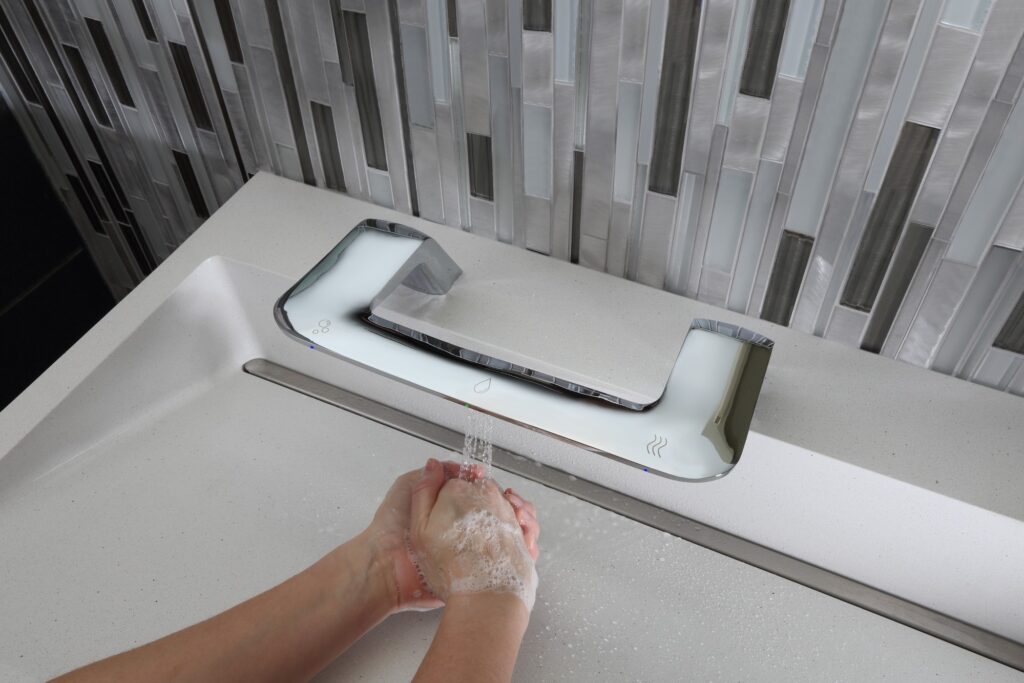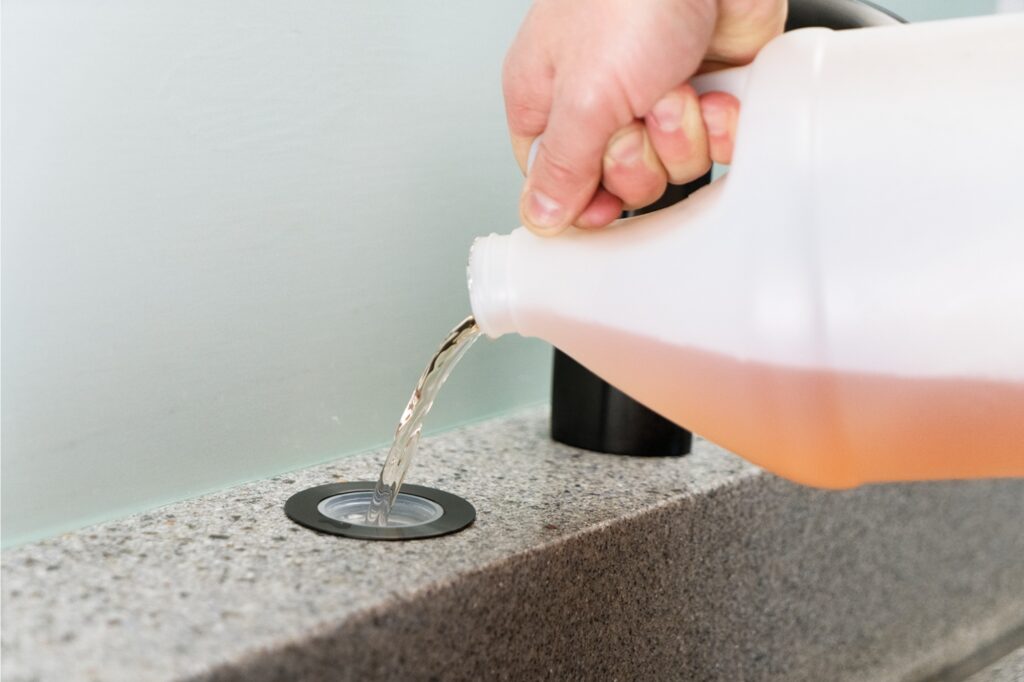Restroom experiences can significantly influence the perception of a business or commercial facility.
Think of a time you may have encountered an out-of-order toilet, messy sink, or empty soap or paper towel dispensers, and how that created a negative experience, or left a lasting impression of neglect or poor management. Poorly kept restrooms can undermine the trust an individual has in a business’ commitment to cleanliness and customer satisfaction, potentially leading to negative perceptions of the overall brand.

Conversely, encountering a clean, well-maintained restroom can have a profoundly positive effect on businesses. Individuals perceive businesses with tidy facilities and fully functioning amenities as places of professionalism, where staff and management have shown their commitment to comfort and satisfaction, and attention to details.
So, how can facilities managers maintain restrooms in a cost-efficient manner while also optimizing their staff’s time? The answer lies in recent survey reports—and the implementation of strategic upgrades—that elevate the status of bathrooms through touchless washroom products, allowing for cleaner and more hygienic restrooms that reduce staff members’ time spent cleaning and maintaining these spaces.
Solutions for Enhanced Maintenance
Commercial restrooms are an integral, and often underappreciated, space for many businesses. Restrooms are often a high-traffic area, but resource restraints, time and limited budgets, often leave restrooms neglected despite management’s best efforts. Despite this, it is growing increasingly important that facilities managers address restroom issues in their establishments to meet customer standards.
According to Bradley Company’s 2024 Healthy Handwashing Survey, 68% of Americans report having a bad experience in a public restroom due to the condition of the facilities. Fortunately, there are new product solutions available to facilities managers who want to improve the efficiency and user experience of restrooms. New restroom solutions offer cleanliness and germ control while streamlining maintenance. Features like maintenance indicators and Internet of Things (IoT) connectivity simplify upkeep, while sustainable designs, like all-in-one, touch-free handwashing models and non-porous sink materials, reduce germ transmission.
Maintenance indicators for soap and paper towel refills not only alert facility staff to refill or address product supply issues promptly, but also reassure users that a facility’s restrooms are regularly maintained. By recognizing current drivers of change in restroom usage, facilities managers with limited staff and resources can implement these innovations, which enhance and anticipate maintenance needs while also elevating user experience.
Increased Expectations for Restroom Hygiene
The general public’s awareness of germs, and concerns of consequent illnesses, has amplified the expectations of a facility’s restrooms since the COVID-19 pandemic. In fact, in 2024, 80% of Americans still report being more conscious about coming into contact with germs due to COVID. Because of this, cleanliness and hygiene in restrooms are now more crucial than ever, as individuals equate these spaces with health, safety, and overall well-being.
Research shows that customers and individuals increasingly value cleanliness, maintenance, and functionality in facility restrooms, and these factors can play a large role in an individual’s perception of businesses, possibly affecting their future profitability. According to Bradley’s survey, 60% of Americans expressed they are likely to spend more money at a business that has clean, well-maintained restrooms.
It is important to note that research has also found that Americans are becoming fond of touchless restroom features, and often go so far as to seek them out in public facilities. Research shows a growing trend in the use of touchless fixtures, with 86% of Americans believing it is important that public restrooms have touchless features and 70% being more likely to return to a business that has touchless restroom fixtures.
Identifying Restroom User Pain Points and Grievances
It is a common occurrence that people’s opinions on a business or establishment change upon entering a restroom. And while restrooms are not the main attraction of most businesses, they play an important role in the overall perception of a company. Despite this, restroom spaces receive the most grievances from individuals, due to the fact that many fall far below user expectations.
According to the survey, the top pet peeves when using restrooms include clogged or unflushed toilets; an old, dirty, or unkempt appearance; and unpleasant smells. Respondents also expressed their dislike of seeing used paper towels left on the floor or around the sink (62%), splashed water on countertops and floors (46%), and careless or reckless behavior that damages the facility (41%).
When asked the most important improvement they’d like to see in restrooms, respondents overwhelmingly said, “Clean them more regularly and keep them better stocked.” Next on the wish list is making everything touchless, followed by always providing paper towels—even if there are dryers. (Seventy percent of Americans use paper towels as a hand-held shield to avoid skin contact with flushers, faucets, and doors.)
Touchless Fixtures
Touchless restroom fixtures are one of the most common solutions that facilities implement to address grievances and reduce product misuse within their restrooms. Thanks to the continual growth of technology, there is a variety of touchless restroom fixtures available to facilities managers.
Faucets, flushers, soap dispensers, and paper towel dispensers are some of the most popular fixtures offered in touchless fixture form and can help reduce the spread of germs and misuse of products. Many touchless products have been developed to maximize the efficiency and lifespan of restroom products, including the incorporation of sensors and mode functions that help cut down on product waste and water usage. Due to their sleek, integrated product design with concealed mechanics, they are easy to clean and can help discourage tampering.
All-in-One Handwashing Design
A new “all-in-one” handwashing design, which combines soap, faucet, and hand dryer into the system, is one form of a touchless fixture that promotes and improves restroom hygiene, maintenance, accessibility, and sustainability. This product concept improves restrooms by eliminating hazards such as slips, trips, and falls due to water dripping on restroom floors. The system is designed to contain all water residue from the users’ hands inside the bowl with the assistance of the specially engineered hand dryer. This product decreases maintenance efforts by removing the need for extra floor mopping, reducing the need to wipe down wet countertops, and removes overflowing waste baskets completely, ultimately freeing up staff to work on other maintenance duties.
Top Fill Multi-Feed Soap Systems
Along with incorporating touchless fixtures, such as the all-in-one handwashing model, an efficient top fill multi-feed soap system can also increase the operational efficiency of restrooms by reducing the need for constant soap refills. This soap system integrates a large-capacity, 1.3 gallon (5.0 L) tank that can supply up to three units, allowing staff to efficiently refill multiple soaps through a single top fill hub.

Refilling is greatly simplified, as staff is able to service the top fill soap above the sink, eliminating the need to kneel down to remove access panels and maneuver themselves under the sink where there is no light, low visibility, and tough accessibility.
A smart sense system utilizes an LED indicator to show when soap/battery levels are low and provides audible and visual indicators to prevent overfilling. This multi-feed soap system accommodates liquid or foam soap and is ideal for high-traffic spaces with handwashing stations.
Restroom Materials and Fixtures Improve Appearances
Innovations in restroom design are revolutionizing hygiene and sustainability practices. Utilizing smooth, nonporous, and seamless materials like solid surface and natural quartz in sinks helps prevent bacteria, mold growth, and delamination while providing easy cleaning, disinfection, and maintenance. Sustainable materials increase the lifespan and versatility of washroom fixture options, promoting attractive and functional restroom designs.
Finishes for soap and faucet fixtures, as well as washroom fixtures, such as towel dispensers, waste receptacles, grab bars, etc., offer a resilient finishing method in multiple colors to match or coordinate with the rest of the washroom. Look for finishes that are easy to clean and fingerprint- and corrosion-resistant.
The future of clean and hygienic restrooms is happening now, and as washroom product manufacturers and technology continue to upgrade appliances and fixtures, the integration of touchless washroom products will promote safe and clean restrooms in all buildings. The implementation of this strategic approach optimizes time and resources, alleviating pressures placed on facilities managers, and promotes the quality of restrooms while enhancing the users’ experience.
Kris Alderson, MBA, LEED AP, is senior marketing manager for Bradley Company, the 100-year-old global manufacturer of commercial plumbing fixtures, washroom accessories, emergency safety fixtures, and electric tankless water heaters, now a division of Watts Water Technologies. The 2024 Healthy Handwashing Survey is available here.
